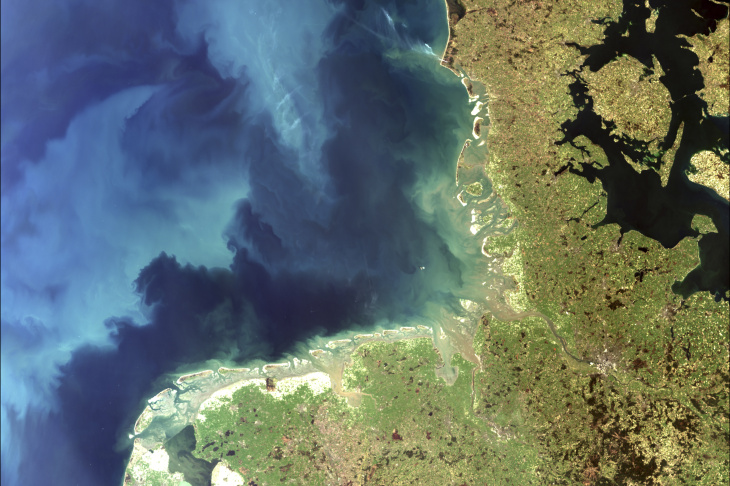Research Platform in Tesperhude at the Elbe

Aerial view of Tesperhude with promenade pier (Photo: Michael Streßer / Hereon)
The Helmholtz-Zentrum Hereon is operating a floating research platform in Tesperhude at the Elbe because “the sea begins here”. Starting in 2022, the research platform provides continuous data about the water quality of the Elbe, which is made publicly available. Furthermore, the research platform can be used by interested people from science and industry. The set-up of the research platform is funded by European Regional Development Funds, the state of Schleswig-Holstein, the Helmholtz Association of German Research Centres and the Helmholtz-Zentrum Hereon.

Research platform at the promenade pier (Photo: Jörn Pietsch / Hereon)
The research platform includes numerous measurement systems. These are providing continuous, high resolution and near real time data regarding different substances in the water (for example nutrients, suspended matter, microalgae, greenhouse gases and selected pollutants). These substances are then transported over the weir in Geesthacht into the Elbe estuary, where they determine the turnover of matter in the Port of Hamburg and further downstream until the adjacent North Sea.
Therefore, the collected data is interesting amongst others for the Port of Hamburg and the Wadden Sea National Park, in order to look ahead as well as to plan and act accordingly. The data can be accessed through the “Helmholtz Coastal Data Center“ (HCDC) in near real time, which is important in the case of extreme events, such as floods. Interested people from science and industry can use the data as well as the research platform itself, for example in order to develop and test aquatic methods and technologies in this environment.

A FerryBox installed in the container (Photo: Volker Dzaak / Hereon)
The FerryBox is an essential part of the research platform und has been developed amongst others together with the Helmholtz-Zentrum Hereon. The automated measurement system determines physical and biogeochemical parameters in surface waters. The water is continuously pumped through a measurement cycle with several sensors. The measurement system usually contains sensors for temperature, salinity, turbidity and chlorophyll flurorescence, as an indicator for microalgae. Additionally, sensors for oxygen, nutrients, pH, carbon dioxide and algae classes can be included.
The FerryBox is measuring numerous parameters every 20 seconds. This allows continuous and detailed observations of the water quality in the long-term. The Helmholtz-Zentrum Hereon is operating several FerryBoxes, amongst others at the mouth of the Elbe in Cuxhaven.





